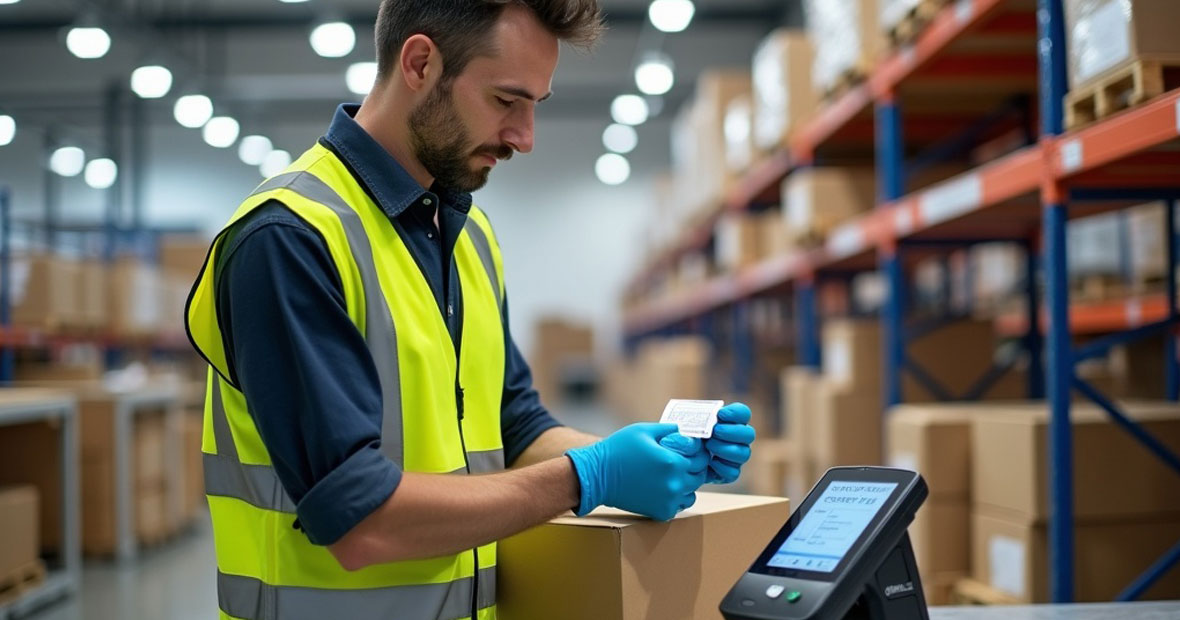
In today’s business landscape, sustainability is more than a buzzword—it’s a necessity. Companies are actively seeking ways to minimize their environmental impact, and one area ripe for improvement is the labeling and printing process. Enter the linerless printer, a revolutionary solution that eliminates the need for adhesive backing liners, thereby reducing waste and enhancing efficiency.
The Environmental Impact of Traditional Label Printing
Traditional label printing methods involve adhesive labels with backing liners, which are discarded after use. This practice contributes to significant environmental concerns:
- Liner Waste: Millions of labels are printed daily, resulting in tons of non-recyclable liner waste that often ends up in landfills.
- Resource Consumption: Producing liners requires additional raw materials, energy, and water.
- Carbon Footprint: The manufacturing, transportation, and disposal of liners contribute to greenhouse gas emissions.
These issues have made traditional labeling systems a target for businesses aiming to reduce their environmental impact.
What Makes Linerless Printers Eco-Friendly?
Linerless printers eliminate the need for backing liners, addressing many of the environmental challenges associated with traditional label printing. Here’s what sets them apart:
- Waste Reduction: By removing the liner, linerless printers eliminate a significant source of waste in labeling operations.
- Lower Resource Consumption: Linerless labels use fewer raw materials during production, reducing the environmental burden associated with manufacturing.
- Energy Efficiency: Modern linerless printers are designed with energy-saving features, such as optimized thermal printing and low-power standby modes.
- Support for Sustainable Materials: Many linerless printers are compatible with biodegradable or recyclable label materials, offering businesses additional eco-friendly options.
- Improved Operational Efficiency: Larger roll capacities mean fewer changes, reducing downtime and saving energy. Efficient workflows lead to lower overall emissions.
Environmental Benefits of Linerless Printers
Adopting linerless printers offers several environmental advantages:
- Reduced Landfill Contributions: Traditional liner waste contributes significantly to landfills. Switching to linerless printing removes this waste stream entirely.
- Lower Carbon Footprint: By minimizing raw material usage, production steps, and transportation needs, linerless printers help businesses reduce their carbon emissions.
- Alignment with Sustainability Goals: For companies aiming to achieve green certifications or meet regulatory requirements, linerless printing offers a tangible step toward sustainability.
- Cleaner Work Environments: Eliminating liner waste reduces clutter and creates a safer, more organized workplace.
- Support for Circular Economies: Linerless printing encourages the use of recyclable and renewable materials, contributing to circular economic practices.
Industries Benefiting from Eco-Friendly Linerless Printing
Various industries can reap the benefits of adopting linerless printers:
- Retail: Retailers use linerless printers for shelf labels, price tags, and promotional signage. The waste-free design aligns with customer expectations for sustainability.
- Logistics and Warehousing: Shipping and inventory labels generated by linerless printers help logistics companies reduce waste and improve efficiency in supply chains.
- Healthcare: Hospitals and labs adopt linerless printing for patient wristbands, prescription tags, and specimen labels, ensuring compliance with eco-friendly standards.
- Food and Beverage: Packaging labels for expiration dates, nutritional information, and branding benefit from biodegradable materials supported by linerless printers.
- Manufacturing: Durable labels for product identification and compliance tracking meet industrial requirements while reducing environmental impact.
Innovations Enhancing Sustainability in Linerless Printers
Recent advancements in linerless printing technology are driving even greater environmental benefits:
- Biodegradable Adhesives: New adhesive formulations are designed to break down naturally, minimizing environmental impact.
- Recyclable Label Materials: Linerless labels now support a variety of recyclable materials, helping businesses achieve zero-waste goals.
- IoT-Enabled Monitoring: Internet of Things (IoT) capabilities allow real-time monitoring and optimization, reducing energy use and material waste.
- Compact, Lightweight Designs: Modern linerless printers are designed for energy efficiency and reduced material usage, lowering overall environmental impact.
- Dynamic Label Sizing: Advanced cutting systems allow businesses to produce labels of variable lengths, minimizing unnecessary material use.
Cost-Saving Benefits of Eco-Friendly Linerless Printing
Switching to linerless printers is not only good for the environment but also financially beneficial:
- Lower Material Costs: By eliminating liners, businesses reduce their raw material consumption and associated expenses.
- Reduced Waste Disposal Costs: Without liner waste, companies save on disposal fees and improve waste management.
- Decreased Shipping and Storage Costs: Compact rolls reduce the space and energy needed for transportation and storage.
- Long-Term Operational Savings: Energy-efficient designs and fewer roll changes contribute to lower utility bills and labor costs.
Challenges in Adopting Linerless Printers
Despite their benefits, transitioning to linerless printers may pose challenges:
- Initial Investment: Linerless printers have a higher upfront cost than traditional systems. However, the long-term savings often outweigh the initial expense.
- Adhesive Compatibility: Businesses must ensure that linerless labels adhere effectively to various surfaces.
- Integration with Existing Systems: Adopting new technology requires updates to workflows and software.
- Training Requirements: Employees may need to learn new procedures for operating linerless printers.
Overcoming Adoption Challenges
To facilitate a smooth transition to linerless printers, consider the following strategies:
- Pilot Programs: Test linerless printers in a single department before scaling across operations.
- Supplier Partnerships: Work with reliable vendors to source high-quality materials and technical support.
- Employee Training: Offer hands-on training sessions to familiarize staff with the new technology.
- Cost-Benefit Analysis: Highlight long-term savings and environmental benefits to secure buy-in from stakeholders.
A Sustainable Step Forward
Linerless printers represent a significant advancement in eco-friendly printing technology. By eliminating liner waste, supporting recyclable materials, and reducing resource consumption, they help businesses achieve sustainability goals while maintaining operational efficiency.
As more industries adopt linerless printing, the positive impact on the environment and business operations will continue to grow. Companies that embrace this technology can position themselves as leaders in sustainability, contributing to a cleaner, greener future.